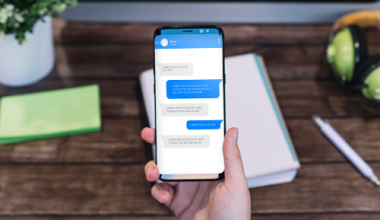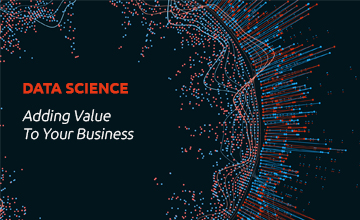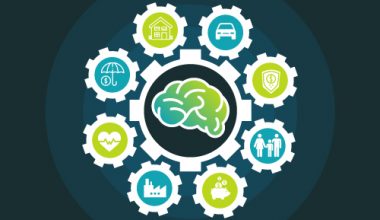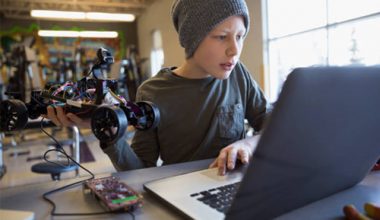By Dr. Lance Eliot, the AI Trends Insider
The fish in the aquarium tank were going round and round the inner edges of the glass surface that encased them in water. Humans watching the fish were likely wondering whether or not the fish knew they were in water. There is an ongoing philosophical debate about whether or not fish can comprehend that they are immersed in water. Maybe they take it for granted just like we take for granted that we are surrounded by air. Maybe they are actually deep thinkers and know they are in water and that they must stay in water to survive. Or, maybe they have no capacity to think per se and so the question of whether they are in water is not even something that they can entertain.
Regardless of the broader question about whether fish know they are in water, the humans watching the fish were looking for something else. The humans were researchers that wanted to see if the fish would demonstrate certain kinds of behaviors. For you see, the experimenters had created a robotic version of a fish and were waiting eagerly to see if the regular fish would accept the robo-fish as one of their own. If the living fish swam along with the robo-fish, it would tend to imply that the real fish were not frightened or otherwise taken aback by the robo-fish.
Indeed, the fish were swimming right along with the robo-fish, all of them going round and round in the tank. Success for robo-fish!
The researchers were wondering too whether the robo-fish could even get the fish to change their behavior, somewhat, such as convincing the fish to follow the direction of the robo-fish. Up until now, the robo-fish had been swimming in the same direction as the fish. This seems to suggest that the fish had accepted that the robo-fish was safe to be near. Would they also though be willing to change their own behavior and end-up following the robo-fish. In some mild respects, yes, it turns out that the fish would follow-up along with the robo-fish. More success for robo-fish!
Now, don’t go too far on this. It’s not as though the robo-fish got the living fish to do the macarena macaroni dance in the middle of the water tank. Instead, it was more akin to slightly altering the direction they were already headed and so a very modest impact on their behavior. But, who knows, maybe one day we’ll be creating robo-fish that are the king of the fishes. All fish hail to the robo-fish! It could become a takeover of all fish by the robots, which presumably (hopefully!) are being controlled by the humans. So, humans control the robo-fish, which in turn control the fish. I know this might seem quite untoward and maniacal. Maybe another version of the future is that robo-fish will live in harmony with regular fish, and they will all help each other. Robo-fish and regular fish will become blood brothers, though I guess without the blood part of it.
One of the research studies about robo-fish that caught my attention involves the study of zebrafish and the development of a modular robotic system that mimics this small fish’s locomotion and body movements. The work is being done at the Robotic Systems Lab in the School of Engineering at the Ecole Polytechnique Federale de Lausanne in Switzerland, and with the Paris Interdisciplinary Energy Research Institute at the University Paris Diderot.
Let me point out that trying to create a robot that is as small as a zebrafish and that has the same motion pattern and look as a zebrafish is a hard problem. The system is known as the Fish Control Actuator Sensor Unit or Fish-CASU, and it attempts to not only look like a zebrafish but also aims to swim at the same linear speed and acceleration as the real fish. There are two main components, the FishBot and the RiBot, and it uses the popular Raspberry Pi processor along with a computer that communicates via Bluetooth and infrared with the robo-fish.
By first carefully studying the zebrafish, the researchers were able to determine that the fish follow a particular sequence while moving in the tank. The first step involves the zebrafish gaining their orientation and they do caudal peduncle bending to start their propulsion. Next, the fish go into a high linear acceleration mode. Third, in the relaxation step, they stop their tail beating and begin to glide in the water, gradually their linear speed decreases during this step. Generally, the zebrafish then repeat those three steps, over and over. The researchers opted to develop a finite-state machine that would get the robo-fish to do roughly the same, namely the orientation, acceleration, and then relaxation steps.
The idea of building machines that mimic the behavior of animals is of course a notion that has been with us for a very long time. Biomimicry is the study and attempt at trying to mimic the behavior of biological creatures. If you look at the work of Leonardo da Vinci, you can see that he was fascinated by birds and hoped to someday develop a machine that would allow man to fly like birds do. Even the Wright Brothers likewise used biomimicry to help get mankind off the ground and flying into the air.
As they say, imitation is the highest form of flattery. If animals can do something, perhaps we can create machines to do the same.
One twist to this topic involves the aspect of potentially changing the behavior of the mimicked creature. In other words, it’s one thing for us to be able to fly in airplanes, and another to have us use biomimicry inspired robots to change the behavior of the birds. Suppose we created a robo-eagle and had it fly along with eagles. Maybe the robo-eagle could warn real eagles when a hunter was trying to shoot at the eagles, or maybe keep the eagles from running into the wall of a building or into the engine of a jet plane. You could say that the biomimicry could be used for purposes of good, augmenting the true creatures and aiding them. As with anything that involves good, there’s the chances too of the bad, such as maybe using the robo-eagle to lure the eagles into a trap of some kind and lead to their destruction or extinction.
Anyway, the overall point is that we can study living creatures and try to create robo-like versions of them and then use those robo-versions to possibly change the behaviors of the creatures themselves. The part in which we try to create robo-like versions is what I call biomimicry. The part about using the robo-like version to then change the behavior of the living creature I call robomimicry. In essence, the living thing begins to mimic the robot thing.
What does this have to do with AI self-driving cars?
At the Cybernetic Self-Driving Car Institute, we are using the techniques of biomimicry and robomimicry to understand and enhance the AI of self-driving cars. This will be important along the path toward achieving true self-driving cars, those that are at the level 5. A level 5 self-driving car is one that can drive the car in whatever manner a human could drive the car. To-date, we’ve seen mainly level 2 and level 3 self-driving cars, and some auto makers and tech firms are just getting to the edges of level 4. We still have a long ways to go before we get to a true level 5.
From a biomimicry perspective, you could say that we are already trying to mimic the biological creatures that underlie cars, namely the human drivers. I realize this seems a bit odd in that usually you think of biomimicry as trying to mimic perhaps a horse, or a bird, or fish. In the case of cars, cars are already a type of machine, but there is a biological component essential to that machine, which is the human that drives the machine. Therefore, it makes sense that we would want to mimic the human driver when trying to create a “robot” that can do the same thing (an AI self-driving car).
Allow me a moment to give an example of how biomimicry can be subtly but demonstrably applied.
Recently, the Nissan 2018 Rogue SL AWD was released. The car has a limited version of self-driving capabilities, including the ProPilot smart adaptive cruise control. As akin to similar systems on other auto makers cars, it allows the system to steer and drive the car while in a constrained highway driving situation. The human driver must still remain attentive to the driving task. The driver’s hands are to remain on the steering wheel, and the system the prompts the driver to periodically nudge the steering wheel to prove that they (the human driver) presumably are still paying attention to the road. Similar kinds of adaptive cruise controls are found on the Tesla Autopilot, the Mercedes Benz DistronicPlus, and the Cadillac SuperCurise.
In the case of the ProPilot, it often appears to move back-and-forth within the lane. It veers toward the leftmost part of the lane, and then corrects itself toward the center, and then tends to veer toward the rightmost part of the lane. Many would not notice the car doing this. It takes a keen eye and an awareness of driving behaviors to readily realize this aspect. In some respects, this would be the same as a novice driver, imagine a student learning to drive. They over-correct in one direction and then the next. The ProPilot also tended to at times brake sharply in traffic, seemingly as though it was belated in recognizing that it was time to apply the brakes. The acceleration would do the same, at times jerking forward and rapidly accelerating when a more gradual increase in speed would do.
A human driver that is a novice might do all of those things. They would be over-correcting within a lane and tend to “weave” rather than be able to keep a steady center-lane approach. They would tend to brake suddenly rather than gradually. They would tend to accelerate rapidly rather than gradually. A more seasoned and experienced driver would be able to generally keep to the center of the lane. They would be able to gauge when to apply the brakes and do so without a sense of dramatics to it. They would be able to accelerate in a smooth manner that would not have the occupants in the car feel like they are in a rocket that is zooming into outer space.
This behavior of the ProPilot could be enhanced by using biomimicry of human drivers, particularly seasoned human drivers. The smoother version of driving is what the self-driving car should attempt to achieve. The odds are that the ProPilot was programmed to consider the angles and torque and other driving factors to mathematically calculate what to do. By also then seeing how human drivers drive, the self-driving capability can become more like human drivers. This is one of the advantages of using machine learning as part of the AI development for self-driving cars. Machine learning based on large data sets of human driving are able to “mimic” the human driving behavior, even if the system itself does not necessarily have any logical reason for it per se, and instead it uses often neural networks which mainly try to find a pattern and mimic to that pattern.
Improvements in AI self-driving cars will occur as the AI becomes more biomimetic of how humans drive.
There is an additional twist to this. Right now, the biomimicry is based on how humans drive today. But, keep in mind that once AI self-driving cars become more prevalent on the roadways, we are likely to see a change in the driving behavior of humans.
Say, what?
Yes, we will begin to see human drivers changing their behavior due to the behaviors of the AI self-driving cars. In a sense, we’ll see robomimicry.
Let’s first look at what is going to happen as AI self-driving cars become somewhat common place on our roadways.
Here’s the human reaction:
Awe
Wide Berth
Acceptance
Treat Like Second-Class Citizen
Begin to Ignore or Disdain
At first, human drivers in their cars will tend to look at the AI self-driving cars in awe. Look, there goes a self-driving car! Let’s follow it to see what it goes. Oh my gosh, did you see it come up to that red light, it made a perfectly good stop at the red light. And so on.
Most of the human drivers will opt to give a wide berth to the self-driving car. It will be the same kind of reaction that seasoned human drivers give to novice drivers. When you see a human driven car that has a sign “Student Driver” you usually give that car a wide berth. You figure that the human driver might do something untoward and will likely be driving in a very timid way. So, you switch lanes to go around it, or you give it extra distance from your car. Human drivers will tend to do the same with the first round of AI self-driving cars.
Gradually, we’ll begin to see acceptance of the self-driving cars. They will be gradually improving in their AI driving capabilities. Rather than giving them a wide berth, instead we’ll see a lot of human drivers that have lost the awe aspect, and instead are irritated or frustrated at the self-driving cars. Why is that darned self-driving car going so slowly? Why is it waiting so long at the stop sign? Human drivers will begin to see the self-driving car as a kind of second-class citizen.
We’ll begin to see human drivers trying to trick or exploit the AI of the self-driving car.
Imagine these kinds of human driving behavior:
I know that the self-driving car waits a long time to make a right on a red light, so I’ll swing around the self-driving car and sneak in front of it, allowing me (as a human) to make the turn without having to wait for the AI self-driving car to do so.
I’ll outrace the self-driving car since I am willing to zip through a yellow light while the self-driving cars are all being cautious and coming to a halt as soon as they see the yellow light and don’t want to race through an intersection.
Up ahead there is a self-driving car, and I can use it to block traffic for me, by getting in front of it, it will try to maintain the proper driving distance and I can then exploit it to prevent traffic from catching up with me.
These are examples of how human driving behavior will change, due to the introduction of AI self-driving cars. Those examples tend toward workarounds regarding the AI self-driving cars. We might say that those human driving behavior changes are “bad” because they are tending toward worse driving behavior by the humans.
Oddly enough, there is a chance that the changes in human driving behavior will be for the good. The robomimicry of human drivers mimicking the self-driving cars could actually get human drivers to be better drivers. If the AI self-driving cars are all tending toward the proper driving distances on the highways, it might get the human drivers to do likewise. If the AI self-driving cars exhibit minimal lane changes and it leads to faster traffic flow, perhaps human drivers will do the same. Whether the human drivers will do this because they mentally see the connection between how the AI self-driving cars are driving and their own driving behavior is an open question. It could be that the human drivers will just witness what is going on and tend to follow along, rather than overtly opting to drive differently.
Not all human drivers will be driving the same way. Some human drivers will more quickly adapt to the AI self-driving cars, while others will take longer to do so. Some human drivers will try to exploit the AI self-driving cars, while others won’t. It will be a mix. Overall though, we need to realize that the introduction of AI self-driving cars onto the roadways will have an impact on human drivers. Currently, most researchers and auto makers are assuming people will drive as they do. It is assumed that the driving behavior of humans is static. The reality is that human driving behavior is dynamic. Humans will change as they see other facets of the roadways and how AI self-driving cars are driving. Biomimicry leads to robomimicry, which will lead to more biomimicry, and so on.
What will human drivers think of AI self-driving cars that eventually can drive as well and perhaps even better than humans? It reminds me of this famous quote by Immanuel Kant: “Even a man’s exact imitation of the song of the nightingale displeases us when we discover that it is a mimicry, and not the nightingale.”
This content is originally posted on AI Trends.
Source: AI Trends






